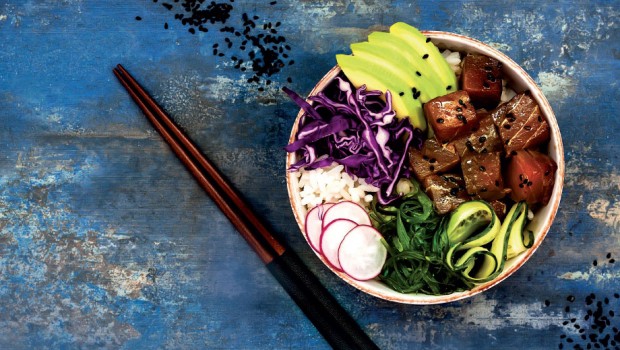
"Say Aloha to Hawaiian cuisine, which—along with the popular poke—has been enjoying a phenomenal explosion as of late. New poke shops continue to open up from coast to coast, while many chefs are revisiting authentic island dishes, breaking away from simply Spam or the 90’s‑era Asian “fusion” creations that mainlanders might think of when picturing Hawaiian food."
"When it comes to poke in particular, those who have lived in Hawaii are so used to eating the raw fish dish on a weekly, if not daily, basis, and seeing it at every grocery store and corner shop, that its recent media attention is akin to peanut butter and jelly suddenly becoming the next big thing," Amelia Levin wrote for FSR Magazine. “Poke in many ways is the entry to other Hawaiian food,” says Chef Mikala Brennan, owner of Hula Girl Bar and Grill, the former food truck-turned-full-service restaurant and bar in Washington, D.C."
Foodies who care about the "next big thing" turn to dining guides for the latest trends. Dining Guide Readers will want to learn about the new Hawaiin fixation. The latest AudienceSCAN survey reported 14.5% of U.S. adults said the restaurants and dining sections were their favorite types of magazines or newspaper sections to read.
“Because people have enjoyed trending dishes like ahi tuna tartare, crudo, and ceviche, we have already had many introductions to raw seafood, and so eating poke is less of a leap of faith for consumers,” she says. “And it seems all of these things have naturally led to the recent poke craze.”
"For the record: it’s pronounced pok-ee. Not poke, as in the verb to nudge, or even, pok-ay, explains Chef Brennan, who has been guilty of the latter. The sudden addition of an accent over the e, as in poké, also baffles her and other native Hawaiians whom she knows."
"Essentially a raw fish salad, classic poke has a few common elements: diced raw aku, an oilier tuna; ahi tuna (yellowfin) or octopus marinated in soy sauce; sesame oil; and green onions. Sometimes limu or other seaweed is added, along wifth seeds or nuts (in Hawaii, kukui or candlenut) for crunch, and chilies or wasabi for heat."
According to the most recent AudienceSCAN data, 26.4% of Dining Guide Readers plan to dine out during their local Restaurant Week. This is a great time for restaurants to try out new Poke menu items and to advertise they are doing so.
"Beyond poke, Hawaii is a breeding ground (literally) for some amazing and unique fish that are less well known to mainlanders. Thanks to progressive and reputable seafood purveyors, gaining access to these species is becoming easier than ever before. What’s more, trusted seafood purveyors source from sustainable fisheries and farmers to make sure they are not contributing to overfishing or damaging the ecosystems. This is even better news for chefs wanting to experiment with unusual types of fish, and the smaller supply adds a little mystique and intrigue to the menu."
For chefs, relying on personal relationships with these fishmongers and seafood suppliers allows them to bring fresh seafood daily to restaurants in landlocked cities. As more seafood purveyors are able to source sustainably caught or farmed fish from the waters around Hawaii, chefs will continue experimenting with new species for their poke and other Hawaiian-inspired dishes, looking beyond the ubiquitous ahi tuna or mahi mahi.
AudienceSCAN data is available as part of a subscription to AdMall for Agencies, or with the SalesFuel API. Media companies can access AudienceSCAN data through the AudienceSCAN Reports in AdMall.
